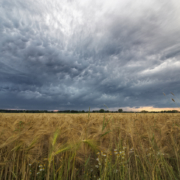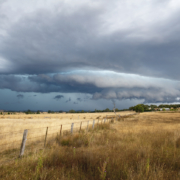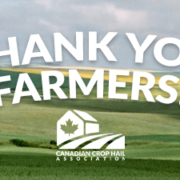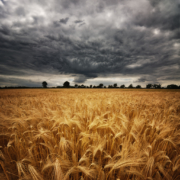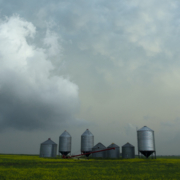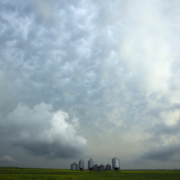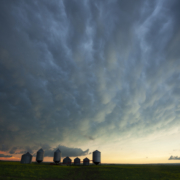Golf ball size hail damages crops in western Canada
Storms dropped hail as large as golf balls across western Canada and produced wind and rain that will be factors in adjusting for crop damage, according to the Canadian Crop Hail Association.
The storms occurred July 17-18 and July 20-25.
CCHA member companies are investigating more than 1,000 claims of crop damage during the time period.
Murray Bantle, of Co-operative Hail Insurance Company, said storms damaged cereals, oilseed and pulses in the Manitoba communities of Russel, Foxwarren, Rossburn, Cartwright, Gladstone, Mather and Plumas.
“Most claims this week were due to scattered thunderstorms,” he said. “July 23 was the heaviest day. Claims are still coming in.”
In Saskatchewan, he said storms damaged a variety of crops in Clavet, Saltcoates, Yorkton, Chamberlain, Lemberg, Weyburn, Alameda, Carievale, Estevan, Frobisher, Glen Ewen and North Portal.
June claims are 95 percent complete in Saskatchewan, he said. Early July claims are about 40 percent complete.
“These storms caused considerable damage in northeast Saskatchewan and south central Saskatchewan,” he said. “We currently have a number of claims deferred. We defer claims due to the fact that we are unable to determine the damage due to the stage of the crop when it was damaged. We defer to a later date to be able to assess the recovery to the plant, if any.”
Brendan Blight of Manitoba Agricultural Services Corporation, said storms produced pea size hail that damaged all crops in the Manitoba communities of Crystal City, Cartwright, North of Austin, south of Gladstone and Swan River.
“The July 23 storm caused minor damage,” he said. “We are still getting claims registered and getting a handle on amount of damage from the July 25 storm.”
Beth Shewkenek, of AG Direct Hail Insurance, said storms damaged crops in the Alberta communities between Calgary and Drumheller.
Scott McQueen, of Palliser Insurance Company, said storms damaged crops in the Alberta communities of Brooks, Champion, Barrhead, Three Hills, Trochu, Drumheller, Olds, Beiseker, Brooks, Strathmore, Drumheller and New Brigden.
In Manitoba, he said storms damaged crops in Rossburn, Angusville, Clearwater, Crystal City and Swan River. In Saskatchewan, he said storm damaged crops in Beechy, Moose Jaw, Yorkton, Carnduff, Gainsborough, Wilkie, Unity, Major, Luseland, North Battleford, Mayfair and Rabbit Lake.
Jackie Sanden, of Agriculture Financial Services Corporation, said storms damaged crops in the Alberta communities of Burdett, Milk River, New Dayton, Wrentham, Taber, Madden, Crossfield, Didsbury, Olds, Camp Creek, Lyalta and Cheadle.
Cassandra Holt, of Canadian Hail Agencies, said storms damaged canola, wheat, barley, and peas in the Saskatchewan. The storms hit the communities of Luseland, Oxbox, Alameda, Wilkie, Major, Kerrobert, Mayfair, Rockhaven, Edam, Denzil and Meota.
In Alberta, she said storms damaged barley, wheat, oats, canola, peas, lentils, and corn. The storms hit the communities of Leslieville, Huxley, Rumsey, Calgary, Drumheller, Rosebud, Carbon, Rosedale, and Provost.
In Manitoba, she said storms damaged canola, soybeans, barley, wheat, corn, and sunflower. The storms hit the communities of Gladstone, Glenboro, Clearwater, Crystal City, Dauphin and Bowsmen.
Darryl Tiefenbach, of Additional Municipal Hail, said storms produced pea-to-nickel size hail in Saskatchewan. They damaged crops in the communities of North Battleford, Speers, Mayfair, Major, Spring Valley, Estevan, Oxbow and Alameda.
“These were spotty storms, which generally don’t have large losses,” he said.
In Saskatchewan, he said storms produced golf-ball size hail. They damaged crops in Wilkie, Unity, North Battleford, Cut Knife, Neilburg, Mayfair, Rabbit Lake, Meota and Paynton.
Wind and rain are factors in adjusting for damage, he said.
“Based on some pictures of the crops in the core of the storm path, there will be some major damage to adjust,” he said.

